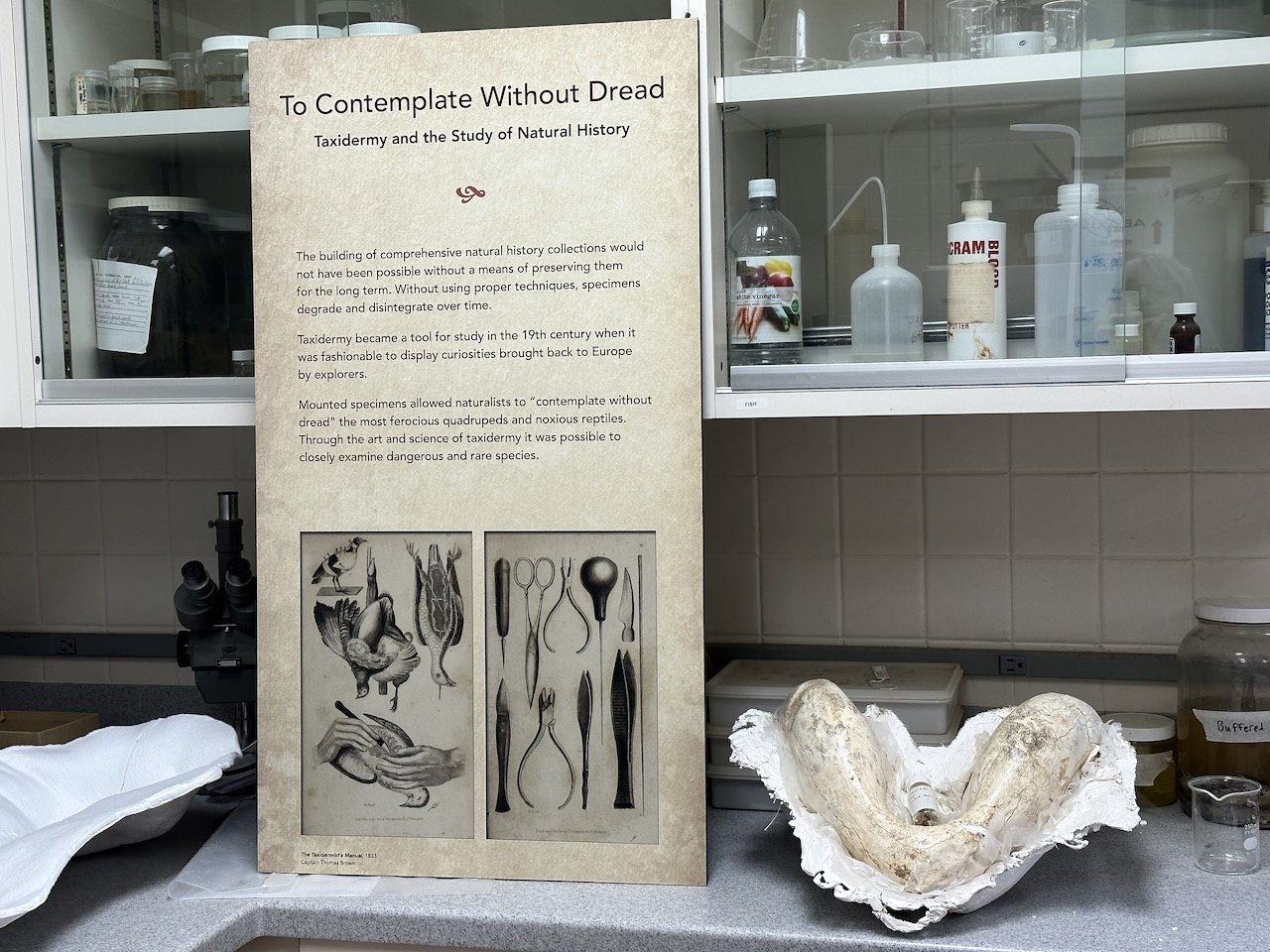Behind the Scenes With Geeks
I like geeks…people who are interested in something to the point of micro-detail, who are enthusiastic and excited about whatever it is that intrigues them, who are brimming with knowledge and happy to share. That’s a form of geekiness…isn’t it? It’s passion channeled into specific areas of expertise. It’s engagement, fascination, that feeling of wow.
I had the pleasure of spending some quality time with geeky folks this week. First and foremost, Monte and I had a meeting at the museum of natural history with a paleontologist. I had to look it up just to be sure, but a paleontologist is an expert in the branch of science concerned with fossil animals and plants. There are different emphases within the field, but one of the most interesting and relevant focuses on the study of the ecology and climate of the past and the interactions of ancient organisms with changing environments.
Jonathan, the paleontologist with whom we met, possessed a wide and balanced knowledge base. We sat in his office in view of a mounted stuffed bison head, a glass globe with a winged creature preserved inside, a small model of a dinosaur skeleton, file cabinets, charts, and the round face of a clock on a stark white wall. The real work of a paleontologist happens out in the field, but after a brief introductory chat, Jonathan invited us behind the scenes at the museum, where samples are preserved and studied.
There is something truly beautiful about learning from what is dead. In fact, an old, yellowed sign on poster board about taxidermy and the study of natural history proclaimed: “To Contemplate Without Dread” and indeed contemplation was encouraged here and dread was replaced by curiosity. There were stuffed birds in glass cases, drawers with animal skins inside, carefully labeled cabinets containing various fossils and minerals. A life-sized model of an elephant bird towered in a corner…this flightless creature actually lived within historical time, on the island of Madagascar, until human activity rendered it extinct.
There were samples of Pleistocene deposits, an astonishing fossilized mastodon skull, and all sorts of things that needed to be explained, but Jonathan could read them like novels. And it isn’t only the big stuff such as whale vertebrate that can teach us; much can be learned from what Jonathan calls “the matrix”, i.e., the immediate surrounding context, including fossilized microorganisms.
Our mission was to learn more about how to monitor, inventory, protect, and study such treasures that are being exposed as cliffs erode, particularly noticeable in this era of climate change. They yield tales of millennia past, and even beyond the sheer wonder of it, they are troves of potentially valuable scientific information about geological formations, weather patterns, how life, landscapes and climate have changed over time, and how living things responded to such changes.
But that’s not all. In the course of this very week, we also enjoyed a backcountry hike with a friend named Nick who views the natural world with a suitable degree of amazement, recognizes the significance of what he sees, and carries deep respect for the wildlife with whom we share this planet and for the indigenous people who walked here before us. Nick is an expert on eagles, among other things, and he knows the geological formations of Santa Cruz Island so intimately that when we looked at a painting later in our house, he knew exactly where the artist would have been sitting, and when he spoke the names of Laguna, Sierra Blanca, and El Tigre red soil, a certain tenderness in his tone resembled love.
More and more, my fervent hope is that in my own tiny sphere of influence I might leave things no worse and even a little bit better, and I am forever grateful for the humans among us who take the time to notice, document, and protect. I appreciate those who ponder the mysteries and illuminate them with the lamplight of accumulated knowledge—the geeks, if you will—the ones who delve into tedious detail with relish, from microorganisms to the stars. We are part of the epic procession of time…absurdly small specks to be sure, but we have been granted the privilege of bearing witness within our fleeting spans. We might as well notice, we might as well learn, we might as well try.
